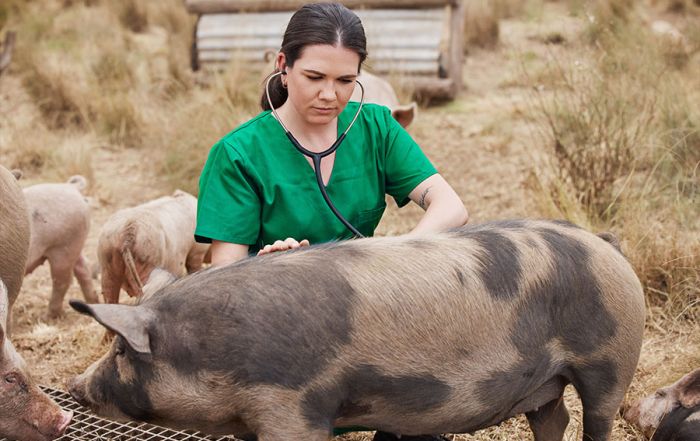It’s All About Numbers: Performance Measures to Enhance Operational Effectiveness
There are a number of performance measures that can provide feedback to managers regarding effectiveness. In this first blog for May, we will discuss some of these tools and how they might be used for a foodservice. These assessments can track the effectiveness of many aspects including operational, financial, food safety, customer service, and human resources. Comparison with industry (external) or internal benchmarks can provide useful feedback on performance.
In the second blog for May, we will discuss some strategies to improve labor productivity, such as time-motion economy, ergonomics, and work simplification principles. As a side note, some research has found that the application of these techniques not only improves consistency and quantity of work, but leads to less fatigue and injury by workers – so a win-win!
There are many metrics that can be used by foodservice managers. There isn’t one best way to track operational productivity, but the key is to be consistent so that trend data are captured. As noted earlier, measures address different aspects of the operation. Below are a few to consider for use in your operation to track productivity.
Operational Metrics
Many onsite foodservices use meals per labor hour; however, this can be affected by procurement form of food purchased. Food cost (a financial measure) may be higher if convenience forms of product are purchased, say fresh-cut produce,
but there will be savings with fewer labor inputs needed to contribute to the meal. Another measure larger operations (with multiple functional areas, such as sit-down restaurant or catering unit) or sites (like different schools in one district) might use is labor hours per unit.
Financial Metrics
Food cost itself and food cost as a percentage of revenue, also known as food cost percent, are very commonly tracked to assess financial effectiveness of an operation. If this isn’t being done within the organization – it should be! Tracking trends and other inputs related to food purchases helps in making decisions about labor needs and product sourcing. A general rule of thumb is food cost percent should run about one-third of operating costs.
Another third to half of operating costs typically falls within the expense category of labor. Some operations track labor cost per unit and/or labor cost as percentage of revenue. Many external variables will affect this, such as whether there is a local minimum hourly wage or the work force is unionized. Every time a foodservice is open, there needs to be staff present. So the operational challenge is to figure out the number of staff needed to complete the identified tasks at the assigned times. Of course this means some knowledge of how busy the operation is going to be! When scheduling staff, managers will generally have a sense of historical needs (i.e. it is a good bet Saturday night will be busier than a Sunday morning for a hamburger joint) and any community events that might increase sales. Having too few staff leads to shortcuts being taken, which can affect quality and safety of food served—and that will only affect the operation negatively in the long run. However, no manager wants to pay to have staff standing around chatting with each other about their latest tattoos while ignoring customers! The type of operation, including menu items and service style, will affect staffing needs. It doesn’t take the Rosetta stone to decipher the magic number, but it does take knowledge of the tasks to be completed, awareness of anticipated needs, and observation of practices to determine staff schedules.
Food Safety Metrics
This is where we like to focus because we recognize that even one whisper about poor food safety practices at an operation can be the death knell with social media very quickly spreading the word. The Centers for Disease Control and Prevention, along with the Food and Drug Administration, have data that show poor employee health and hygiene practices are leading causes of foodborne illness. Managers should observe when and how hands are washed and whether gloves are used correctly, including changed when tasks are changed. FoodHandler has great tools for training on these topics.
A good manager also should be tracking the inventory of supplies like soap, disposable towels, and gloves. If stock moves slowly, that is a clue (a red flag) that handwashing is not occurring when and how it should be, or gloves are not being
changed.
Time and temperature logs of storage units, end-point cooking temperatures, and temperature of foods on serving lines are all important to document. In earlier blogs we talked about the importance of time and temperature controls and FoodHandler has developed logs that can be downloaded as well as some great looking graphics that can help remind staff about these best practices.
Customer Service
Assessing customer satisfaction is important because if you don’t have a customer coming through the door, you don’t have a business! Obviously, customers express their satisfaction and dissatisfaction in different ways. Some will be very vocal
(both positive and negative), while others will be more passive. Common ways satisfaction is tracked is through guest interaction (this is part of management by walking around), meals sold, or revenue generated. Of course, external variables need to be noted, such as the polar vortex that caused a lot of shut downs this past winter, as well as whether an operation increased menu prices or had promotions. Operations may track customer satisfaction with follow-up surveys, although it takes a motivated person to respond to these. Other operations may use a ratio of customer complaints to total customers during a set time period.
Human Resources Effectiveness
Experienced managers know the value of a long-term employee. Clues that there is trouble in the ranks can be identified through excessive absenteeism or employee turnover. Running short staffed takes its toll on the team, affects quality, and can lead to accidents. Tracking work place injuries is also useful as this identifies needed training or protocol changes (those standard operating procedures we discussed earlier).
In the second blog for May, we will focus more on strategies to maximize human resources. All too often, employees are busy without being effective. You have all heard the phrase – spinning their wheels. Well, we will cover some ideas on how to “work smarter, not harder”, which can lead to increased productivity, improved quality, and safer food!
Risk Nothing!
Never Did I Ever…
Yes, I know the real game is “never have I ever”, but that phrase didn’t work [...]
Understanding Food Contamination in Foodservice Operations
Within this blog, I’ve provided a lot of details about the finer points of food safety [...]
The Antibiotic Debate in Our Food Chain
The discovery of antibiotics in medical science is regarded as one of the most important medical [...]
Exposing the Risks of Raw Milk
When I began my career in the food safety area several years ago, I never dreamed [...]










